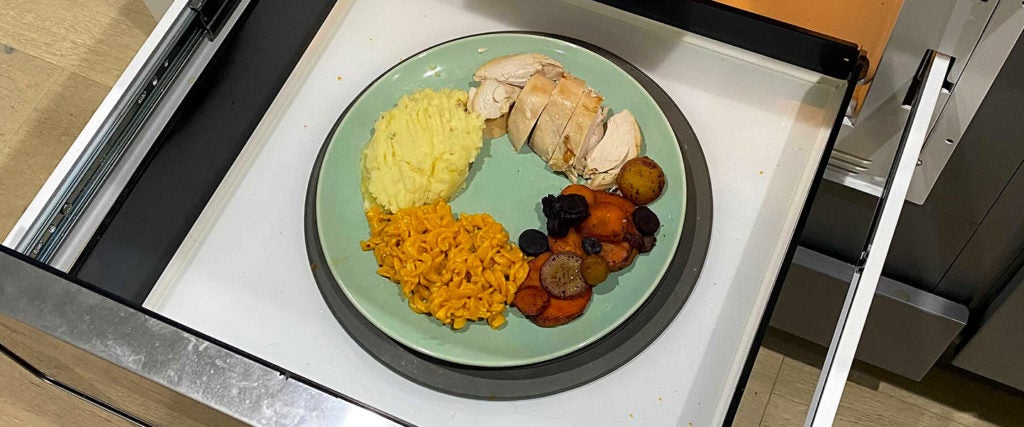Before submitting yourself to “healthy eating” in the new year, it’s important to get the most mileage out of your gluttonous holiday leftovers. If you’re anything like me, that typically entails shoving a plastic container full of mush into the microwave, burning your mouth on the first bite and becoming simultaneously pissed and confused when the middle is freezing cold.
Turns out, this keeps happening to me because I’ve been microwaving wrong my entire life. To properly reheat my food in a uniform, efficient way, I should be shaping my pile of refrigerated grub like a donut.
LPT: When heating leftovers, space out a circle in the middle, it will heat up much more evenly. from LifeProTips
In short, microwaves heat up food by creating an electromagnetic field that rapidly switches back and forth. In doing so, the magnetically-charged water molecules in your food also rapidly alternate, causing the friction that results in heat, which is obviously a good thing. The problems arise with salt molecules. “Salt molecules tend to break apart in the presence of water,” explains food science professor Ramaswamy Anantheswaran in an interview with Penn State University’s Press Office. “The sodium and chlorine ions create heat by colliding in the rapidly oscillating electromagnetic field, leaving less microwave energy available to heat the center of the food.”
This is why you’ve probably noticed that, while microwaving a bowl of soup, the liquid around the edges tends to boil, but it’s still cold in the middle. “The soup near the outside encounters the microwave energy first and very rapidly heats,” Anantheswaran explains. “This is because the salt ions absorb so much energy around the outside of the bowl that they produce localized boiling before the rest of the soup absorbs enough energy.”
The same process happens with any other microwavable food, but unlike soup, you can solve this issue by forming solids into the shape of a ring. Doing so maximizes the surface area of the food on your plate, thus allowing more food to heat up. And voila, you’ll avoid having a pile of mashed potatoes that are scalding hot on the surface, but a frozen tundra at their core.
There are some Tupperware-related hacks that can help, too. Namely, round, microwave-safe containers are better than square-shaped ones. Per General Electric, the corners of square containers “absorb microwave energy from four directions: the two sides, bottom and top,” which cooks any food in the corner faster than the rest. Round containers, however, “have no corners or center and result in faster, more even cooking.”
Another pro tip: In instances where you’re unable to form a leftovers donut, you should try to arrange your plate with the bigger pieces on the outside, where they’ll heat up faster, and smaller pieces near the middle of the plate, so they won’t be overcooked.
Ain’t nothing cold about any of that.

